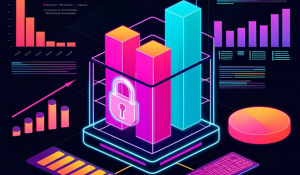With the cybersecurity landscape growing increasingly complex and perilous, recent statistics underscore the urgency of fortifying software supply chains. By year-end 2022, the number of software packages affected by supply chain attacks surged from some 700 in 2019 to over 185,000, revealing a dramatic escalation in these threats. Also important, the cost of cybercrime to businesses is projected to reach a staggering $138 billion by 2031, highlighting the financial impact of these attacks and the critical need for robust defenses.
The broader cybersecurity environment also presents alarming trends, with 43% of all breaches involving insider threats, either intentional or unintentional. On average, hackers launch attacks 26,000 times a day, evidencing the relentless nature of today's threat landscape. These figures paint a stark picture of the current state of cybersecurity and the pressing need for comprehensive solutions that prioritize the integrity and security of software supply chains through advanced technologies like SBOM and deep binary analysis.
Given these statistics, it's clear that organizations must take proactive steps to safeguard their digital assets and ensure the security of their software supply chains against an ever-evolving array of cyber threats.
By integrating cutting-edge technologies and methodologies, such as Software Bill of Materials (SBOM) and deep binary analysis, cybersecurity practitioners can address the immediate challenges of software supply chain security and also anticipate future threats. They can ensure that businesses maintain resilience in the face of an ever-changing threat landscape.
Today's best solutions are more than just security tools. They're also strategic partners in safeguarding the integrity and security of software supply chains. This is vital in sustaining operational continuity and safeguarding sensitive data against the backdrop of an increasingly hostile cyber environment.
Understanding the Value of SBOM in Software Security
A Software Bill of Materials (SBOM) is crucial for maintaining transparency throughout the software supply chain. SBOMs provide a detailed inventory of every component involved in your software's construction. This transparency is pivotal in:
- identifying vulnerabilities
- ensuring compliance
- facilitating effective risk management
By offering a granular view of software components, SBOMs enable security teams to pinpoint and address potential threats swiftly, thereby reinforcing the security posture of the entire supply chain.
The Power of Deep Binary Analysis
Among the solutions to many of today's software supply chain security challenges, Binary Software Composition Analysis (SCA) sits at the core. This innovative approach goes beyond the surface-level examinations that characterize traditional security measures. By delving deep into the firmware of connected devices, binary analysis dissects and scrutinizes every component with unmatched precision. This method uncovers hidden vulnerabilities that other supply chain security disciplines might overlook, offering a profound layer of security that is essential in today's complex digital environment.
Learn more about binary analysis here!
Enhanced Decision-Making with Metrics, Risk Assessment, and Strategic Vulnerability Prioritization
Effective cybersecurity requires the ability to make informed decisions based on comprehensive metrics and risk assessments. This approach transforms raw data into actionable insights, offering organizations a strategic edge in managing and mitigating software supply chain risks. A critical aspect of this methodology is the integration of strategic vulnerability prioritization systems, such as the Exploit Prediction Scoring System (EPSS), which enhances traditional vulnerability assessment frameworks.
The strategic application of systems like EPSS in evaluating vulnerabilities enables a more nuanced understanding of risk, focusing on the likelihood of exploitation and the potential impact of vulnerabilities. This prioritization goes beyond conventional scoring systems by factoring in real-world exploitability and threat intelligence, offering a dynamic and effective risk management strategy. It's important to note that while such prioritization systems are invaluable for assessing common vulnerabilities and exposures (CVEs), they might not apply directly to non-CVE related security issues. In these cases, organizations often rely on proprietary or alternative scoring methodologies to evaluate risk.
The concept of aggregating individual finding scores into a comprehensive artifact or product score illustrates how prioritization can guide the overall security posture of devices and software. Higher scores indicate a greater need for prioritization in the remediation efforts, directing resources to where they are most impactful. This systematic approach streamlines the process of risk management, from identifying critical vulnerabilities to implementing strategic remediation efforts.
Leveraging advanced prioritization frameworks encourages a shift towards more proactive and informed cybersecurity practices. It not only simplifies the complex landscape of threat management but also empowers security teams to act swiftly and decisively against potential threats. By adopting these frameworks, organizations can enhance their cybersecurity defenses, reduce risk, and maintain a strong security posture against an evolving threat landscape.
The move towards integrating sophisticated vulnerability prioritization into cybersecurity strategies signifies a broader trend towards intelligence-driven security practices. It reflects an understanding that effective cybersecurity is not just about detecting threats but prioritizing and addressing them in a way that aligns with the organization's specific risk profile and operational priorities. This strategic prioritization is essential for staying one step ahead of cyber adversaries, ensuring the security and integrity of digital assets in an increasingly interconnected world.
Centralized Security Data and Industry-Specific Solutions
When you're in the market for a software supply chain security solution, look for one that can centralize product security data. The best solutions can consolidate information from many security testing and application security (AppSec) tools into a single, comprehensive platform. This centralization simplifies the complex landscape of software supply chain security, enabling teams to gather, analyze, and interpret data more efficiently.
Also, look for a platform that's tailored to meet the specific needs of various industries. These platforms offer comprehensive solutions that manage risks effectively, providing security teams with an expansive, unified view of the risk profile across a software supply chain. By leveraging advanced binary analysis and incorporating data from an extensive range of security testing tools, these platforms prioritize remediation efforts and focus on the most critical vulnerabilities.
Learn more about the Finite State Next Generation Platform here!
Conclusion
The best software supply chain security platforms represent a leap forward in software supply chain security. By emphasizing the importance of SBOM and harnessing the insights provided by deep binary analysis, they can offer an unmatched level of protection. This not only secures software from creation to delivery but also ensures that the entire vendor ecosystem adheres to the highest security standards. With the best solutions, organizations can navigate the terrain of risk exposure confidently, making them an invaluable ally in the quest to safeguard digital assets in an increasingly interconnected world.
Subscribe to Our Blog
Get the latest posts delivered straight to your inbox weekly.
Share this
You May Also Like
These Related Stories

The 2025 Verizon Data Breach Investigations Report: What It Means for Product and Supply Chain Security

Provenance: What it Can and Can’t Tell Us About Connected Device Risk


